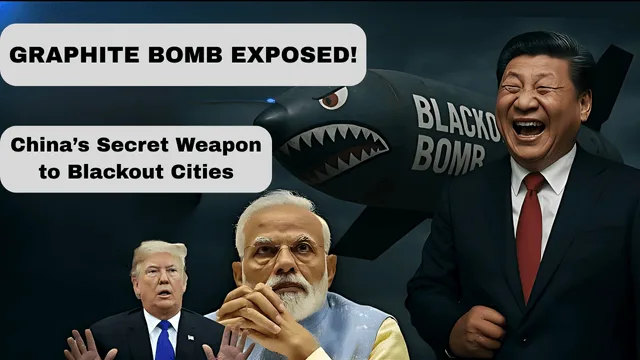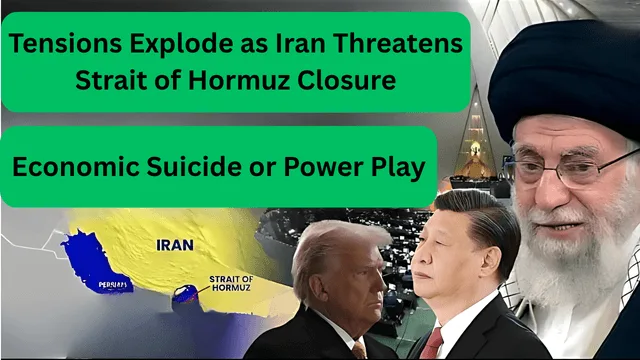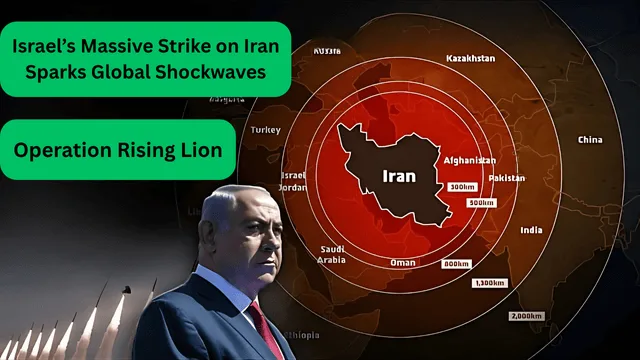Supreme Court Delivers a Landmark Verdict Prioritizing Victim’s Voice Over Rigid Legal Norms
A Ground-breaking POCSO Judgment Where Conviction Was Held but the Accused Was Acquitted Using Article 142 Based on the Victim’s Plea
We will talk about the ground-breaking judgement of the Supreme Court, which was passed recently on the POCSO Act. This judgement is also being called an eye-opener judgement. This is a unique judgement in itself where a girl is raped.
After the rape, it is also proved. Conviction is also held in it. Meaning that it is believed that a crime has been committed. The culprit has committed the crime, but still the culprit is not punished. Rather, the Supreme Court acquits the accused using its powers under Article 142.
Why did this happen?
Because the victim says that I am not as troubled by the rape as I am by the legal system. The police system, the entire process of police investigation. Dealing with lawyers and then dealing with judgments was such a disturbing process in itself. It was such a disturbing process that it disturbed me so much that now I don’t want justice, I want justice.
Now, what did that justice ask for?
He asked that the accused be acquitted. What decision did the Supreme Court give in this, and what were all the things that were there in it? Look at the name of the judgment. The name of the judgment is In re Right to Access of Aliens 2025 Supreme Court. And the bench in this is of Justice Abhay Oka and Justice Ujjwal Bhuyan. In real means in the matter of right? So let me tell you one more special thing in this that Justice Abhay S Oka has retired just yesterday.
But he has given an amazing judgment. So let’s discuss it. Before that, read this sentence. The society judged her, the legal system failed her, and her own family abandoned her. So this is the sentence that the Supreme Court has used in its judgment. And the plight of the victim is visible from this one sentence.
What is the Story?
Extremely what happened is that a girl meets a boy at the age of 13 and when she meets that boy after some time they become friends, fall in love and the girl leaves her house with that boy and gets married in a temple. Immediately, the age is that the child she marries is cardinal age big than her. And then after she gets married, she goes to the boy house and starts living there.
Once the girl gets to know that her girl has checked out from house, she files amp suit against him. She finds out that her daughter has eloped with this boy. Now she goes there and tells her to come back. The girl is not ready to come back. The mother files a case against the husband under POCSO. Now he is the husband. So she files a case against him that he has kidnapped my minor daughter from home and raped her. And then the police come and bring the girl from there, and the girl comes to her home. After coming home, she is sent to school.
But what is the problem?
Now her family does not treat her well. The whole society judges her. When she goes to school, she has to face judgments in school. So these are all problems on one side. On the other hand, the boy whom she considers her husband has been arrested by the police.
Then, when the case goes to the POCSO court under the Special POCSO Act, he is sentenced in this case. He gets a sentence of 20 years, and a fine is also imposed on him. Now the man whom the girl loved and married is behind bars in jail. So, in this case, the accused goes to the High Court against the conviction and sentence. Now, this is the judgment in which the High Court made a very controversial comment.
If you follow legal current affairs or legal news, you will remember that there was a judgment in which the High Court said that adult girls, that is, teenage girls, should control their sexual desires, and after that, it was criticized a lot that the High Court could say such things. The High Court says such unwarranted things, such controversial things, and moral policing is not the job of the High Court. The job of the High Court is to do justice. Give the judgment and end the matter.
How are you doing moral policing like this?
How are you blaming the girls, and in that case, the High Court had also acquitted the accused? The sentence given for that is suicide. But the High Court had said such things. There was a lot of hue and cry. So the Supreme Court took suo motu cognizance of the matter, and after taking suo motu cognizance, it gave this judgment. The Kolkata High Court was also not happy with the decision of the High Court. So it also filed an appeal.
Supreme Court’s Suo Motu Cognizance and Committee Formation
So on one hand, the Supreme Court took suo motu cognizance, in which the High Court criticized the High Court that it cannot use its powers to say such things. Your job is not to do moral policing. Your job is not to say such things.
What are you doing with this?
By this, you are affecting the right to dignity of adolescents, their fundamental right, somewhere or the other, and this is not expected from you. So the Supreme Court openly criticized this and set aside the decision of the High Court and said that rape has happened in this case. And because rape has happened, that is why he should be punished.
But the High Court formed a committee considering the situation of the case, the situation of the victim. A three-member expert committee was formed. Who was in it? It included a clinical psychologist, a social scientist, and a child welfare officer. So this three-member committee was formed.
They were asked to inquire into the matter and file a report. This committee filed a preliminary report and a final report. And based on this final report, the Supreme Court has given this verdict where Supreme Court Delivers a Landmark Verdict. We will now talk about what happened in this report. So basically, where did the story progress in this case?
Emotional Complexity and Victim’s Plea
So the matter went to the High Court. Now what happened? In the meantime, the girl got pregnant. She had a daughter. The younger one means that the girl herself is still young; she was 14 years old by the time she got married. And her husband was 25 years old, so the age gap between them is quite big. There is an age gap of 11-12 years.
But now she considers him her husband. She has a daughter with him. Her mother had taken the girl to her house, but the girl came back and started living with him because she wanted to live with her husband. Now in this situation, the person whom she considers her own and who is probably her only support, because her family has taunted her. She has not received good treatment. Society is also judging her. In such a situation, her only support is her husband, and he is in jail.
Now, to get him out of jail, this girl has struggled in many places. This girl has talked to the police at many places. Sometimes she has talked to lawyers. She has also paid different amounts to lawyers. So the total amount spent by this girl is ₹1,35,000 to get him out of jail. Now, what happened is that this is not the only thing she has to face.
The legal fraternity has also properly exploited her. This girl comes from a very poor family. And the boy she has married is very poor. He is a daily wage worker. Their living situation is such that it is a temporary situation. There are four walls made of bricks, but the roof is made of tarpaulin. Nutrition is not being completed. There is no money for education. So the girl is in such a poor situation.
But by arranging money from here and there, she hired lawyers so that she could get her husband out on bail, so that she could save her husband from punishment.
Supreme Court’s Interpretation of Justice
So in such a situation, the committee which made the report inquired into all these matters, and the committee also said that yes, a lot of wrong is happening with this girl. Everyone in society, her family, her school, everyone is judging her. She has no support. Her only support is her husband, who is now the father of her child.
And now this girl wants only this much from the law, that is, the court, that her husband should be saved. She wants her daughter should get her father back. Because when the inquiry was done in this report, it was also written in this report that when her father was taken to jail, that is, her husband was taken to jail, at that time her daughter cried a lot.
She was very upset due to separation anxiety, and she kept crying for her father for many days. So this girl’s only demand from the court was that her rapist should come back home.
Legal vs Emotional Justice
If we look at the law, a crime has been committed because the girl is below 18 years of age. If a girl is below 18 years of age, you cannot have sexual intercourse with her. Even if she is your wife. Why? Because our law states that the age of consent is 18. So if the girl is below 18 years of age and she agrees to sexual intercourse, it is still considered rape and the culprit is punished for it.
The law only sees that whatever requirements of the law are being fulfilled. If they are not being fulfilled, then you will be punished. The law does not interfere with social aspects or emotional aspects. So the court said that this is a case that has come before us, where if we look at it from the point of view of law, a crime has been committed, but if we look at it from another point of view, the girl says that she is not bothered by the crime. I am not bothered by the criminal. I am bothered by the law, by our system of delivering justice.
He has faced so many hardships. He has incurred so much debt that his small family cannot be saved. The girl is praying for this, and the court had examined her for this, and the inquiry report was also seen by the court. The court said that we want to punish in this case. That means the court has given the conviction that yes, he has committed the crime. He is the culprit. His crime has been proven. All the witnesses are against him. But now, if we give him a sentence.
How much should we give? How should we give it?
The court said that now we have to give our sentence. But this report is directly preventing us from giving the sentence. Looking at this report, we understand that if we give more punishment here, the victim will be sadder. A lot of injustice will be done to her. So to do justice to the victim, the Supreme Court used its powers under Article 142 and, using those powers, gave complete justice in this case and said that here, even after the accused is proven guilty, the accused will not be punished. He will be acquitted so that he can live with his wife, his daughter. This was held in this judgment.
Welfare Directives and Recommendations
A very interesting thing was said in it, and something else, meaning so much injustice has been done to this girl, so some guidelines were also issued regarding the National Commission for Women, and the court said that look, our constitution calls our state a welfare state.
Is it right? Meaning its job is that our public, the people of India, our state, should pay attention to their welfare. So now in this case, the court said that because our legal system failed this particular child and this particular woman. Okay? So much wrong has happened to her, so now it is the responsibility of the state to become her protector.
And then directions have been given to the state that if this girl studies in the 10th class, then the expenses of her education will be borne by the court. The state will bear it. The government will bear it.
Secondly, if her younger child goes to Anganwadi, then the government will bear his expenses. Along with this, NGOs should be contacted regarding their nutrition, so that their nutrition and maintenance can be done. Their living conditions are very bad.
They should provide her with a living situation, and they also said that this girl took a loan of ₹1,35,000 so that she could save her husband from jail and get him bailed out.Since that loan is a one-time measure, they should help her with that too, so that she can repay whatever loan she has taken.
The court indicated that otherwise whatever she encountered at such a tender age, she had to endure numerous challenges at such a young age, her daughter had to confront many issues, we cannot change that, but what we can do is take some steps for the future, so the court provided guidelines to the government in this case to take these steps and also stated that after doing all this, whatever things have been said, after following all these guidelines, the government has to file a compliance report in the court so that the court is satisfied that yes, what was said has been done.
Read More: https://hindiakhbarr.com/












Leave a Reply